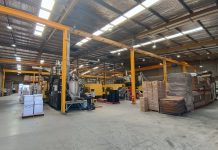
Australia’s manufacturing sector expanded for a fourth consecutive month in April, though at a slower pace, with the S&P Global PMI easing to 51.7 from 52.1 in March.
The continued growth was underpinned by stronger inflows of domestic new work, which lifted production volumes, purchasing activity, and inventory levels, according to the seasonally adjusted S&P Global Australia Manufacturing Purchasing Manager’s Index (PMI).
However, optimism among manufacturers slipped to its lowest level in six months, and export demand deteriorated for the second straight month amid heightened trade uncertainty.
“Australia’s manufacturing sector continued to expand at the start of the second quarter, extending the sequence of growth that commenced at the start of 2025, according to PMI data,” said Jingyi Pan, Economics Associate Director at S&P Global Market Intelligence.
“A positive demand trend was observed with new orders rising at the fastest pace in nearly two-and-a-half years. Rising new work inflows also contributed to greater hiring and purchasing activity.”
The improvement in domestic demand spurred a third consecutive monthly increase in output. Firms reported the uptick was driven by successful business development initiatives and pre-emptive stockpiling by clients.
Staffing levels also rose for the second month in a row, maintaining the fastest pace of job creation in two years.
Despite workforce expansion, manufacturers recorded the first increase in backlogs of work since November 2022.
Survey respondents attributed this to stronger demand and supply chain delays, with supplier delivery times lengthening for the 22nd consecutive month due to material shortages and transport disruptions.
Purchasing activity accelerated at the quickest rate since June 2022, as businesses acquired more inputs to support production and build up inventories.
Stocks of both raw materials and finished goods rose, with the latter marking its sharpest accumulation in nearly a year.
However, the gains in output and orders were offset by concerns surrounding global trade developments. “Taking a holistic look at the latest data, traces of stockpiling contributed to the rise in domestic demand. This was triggered partly by uncertainty relating to global trade,” Pan explained.
“Concurrently, sentiment and export performance showed further signs of being dented by trade policy updates in April.”
Manufacturers’ expectations for future output declined, with business confidence falling to a six-month low. While firms remained hopeful that economic improvements, product innovation, and marketing would support future growth, the growing uncertainty in international trade weighed on sentiment.
Adding to the challenges, input cost inflation persisted, driven by rising purchasing and shipping costs. In response, manufacturers passed these costs onto customers, raising selling prices at the fastest rate in over two years.
“At the same time, foreign exchange volatility led to higher costs, which manufacturers opted to share with clients. The intensification of output price inflation will be a trend to watch as a possible source of downstream price increases in Australia,” Pan added.




















